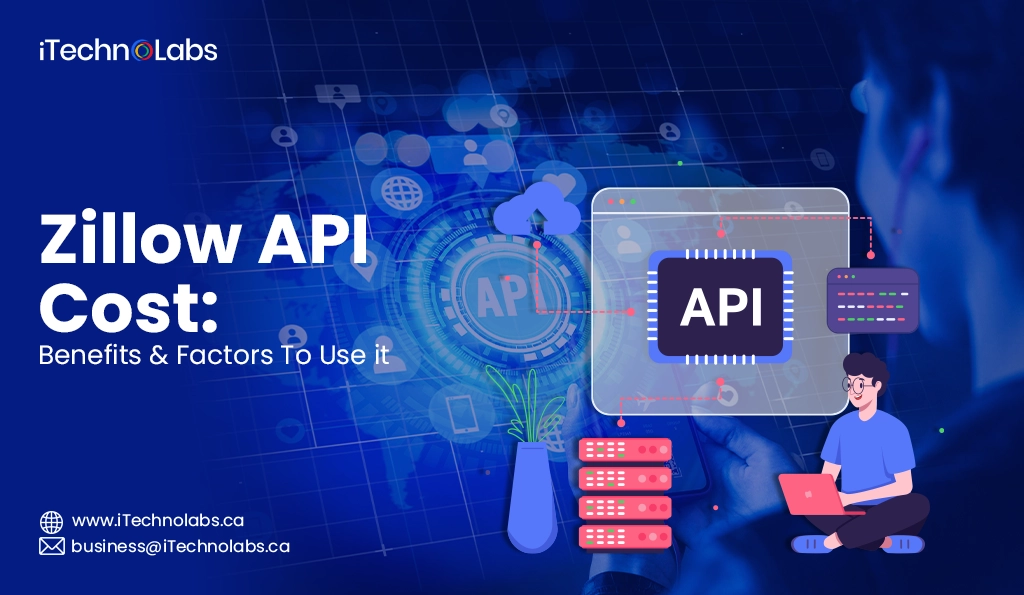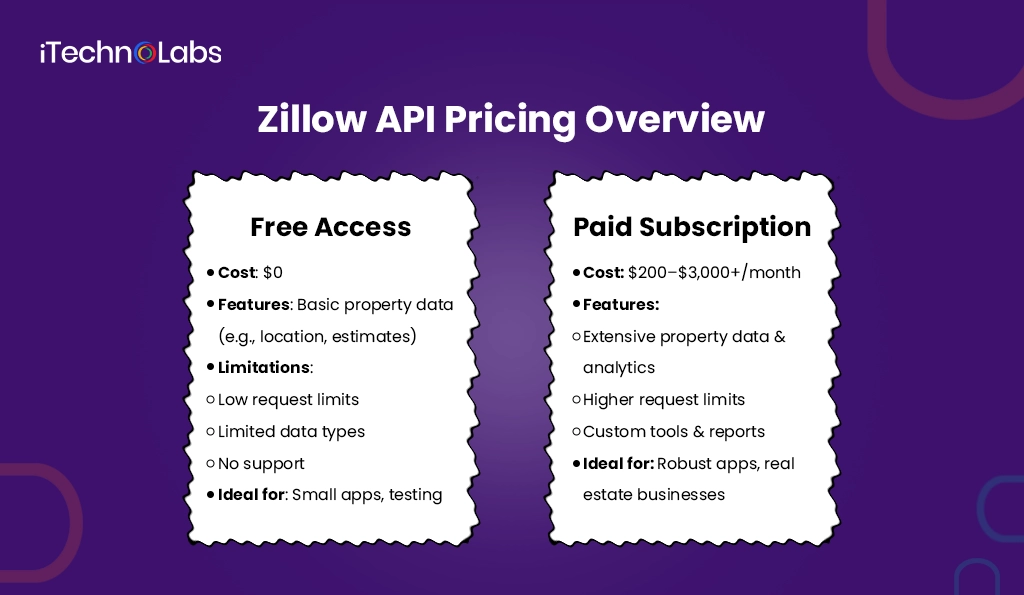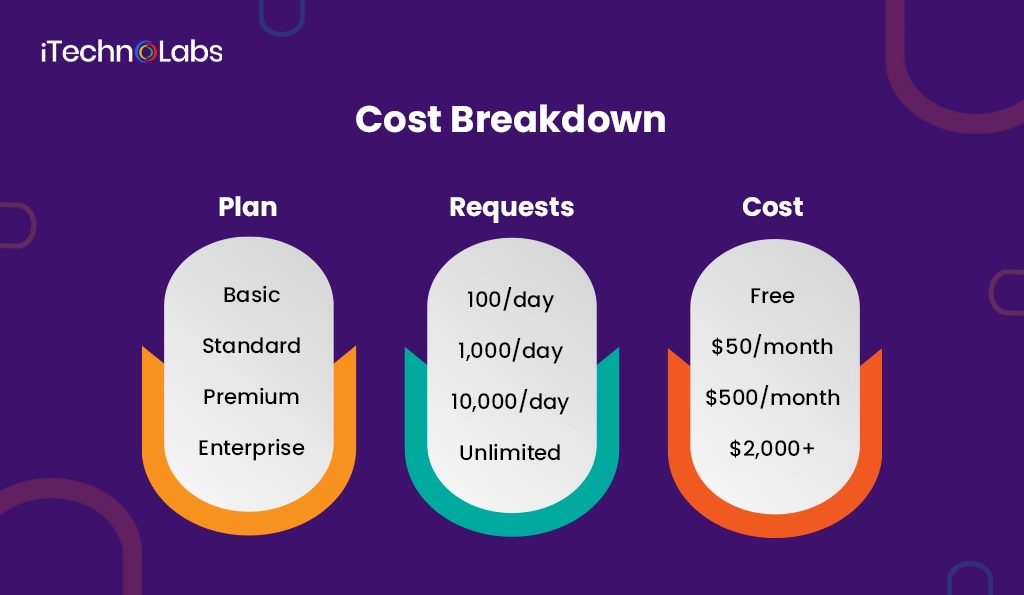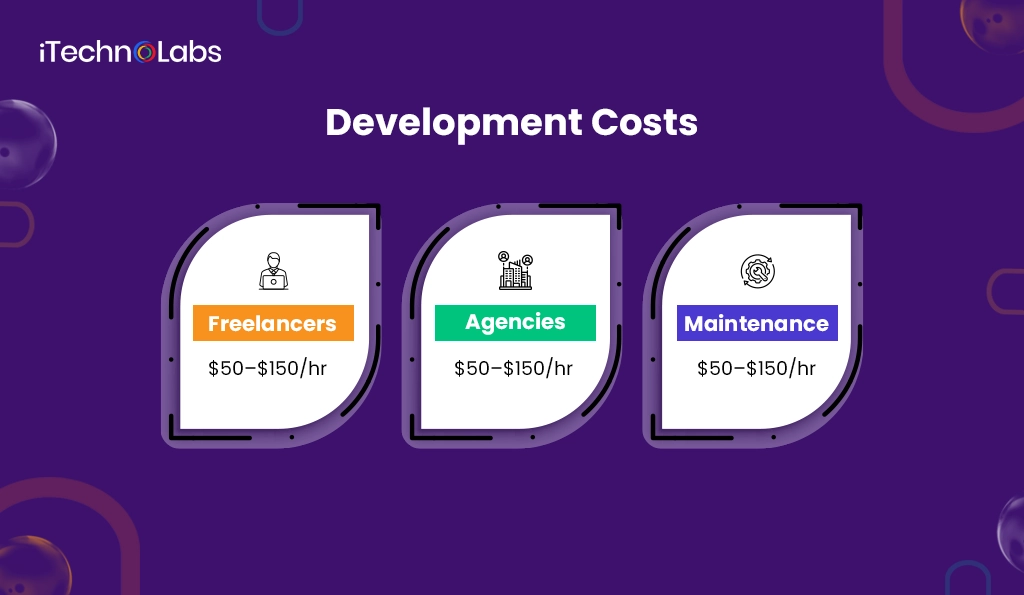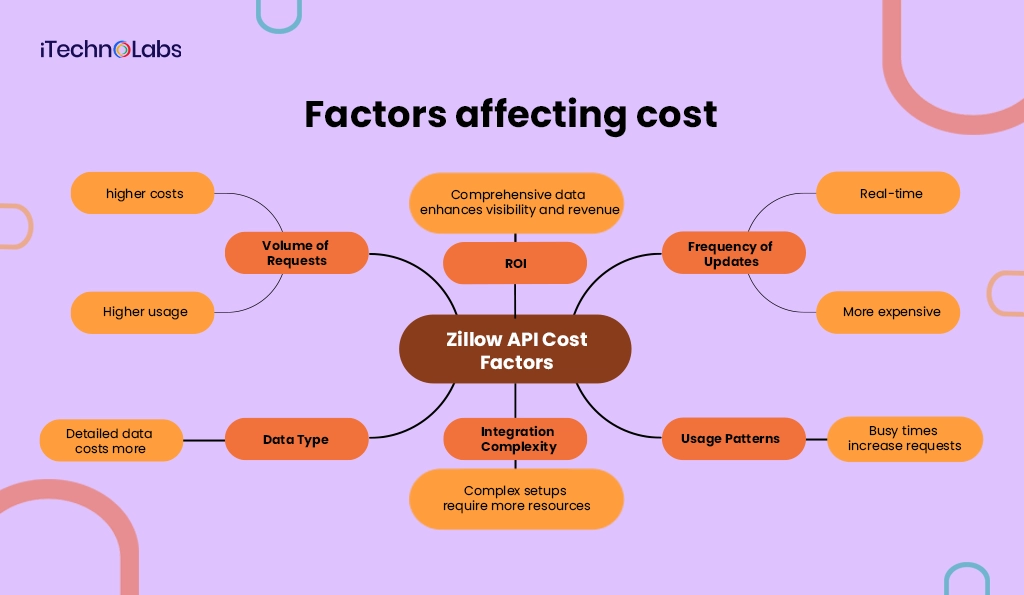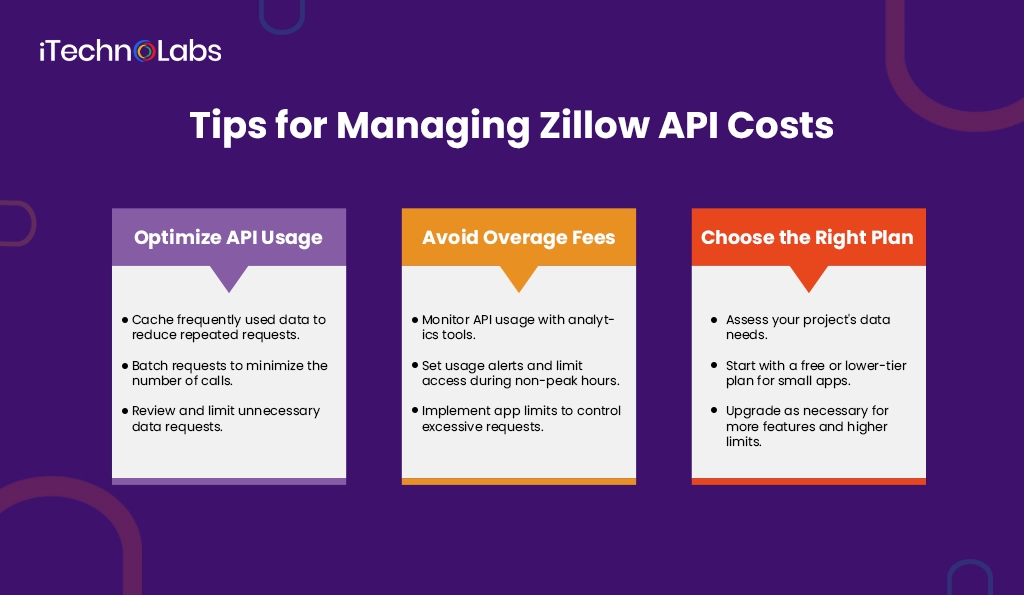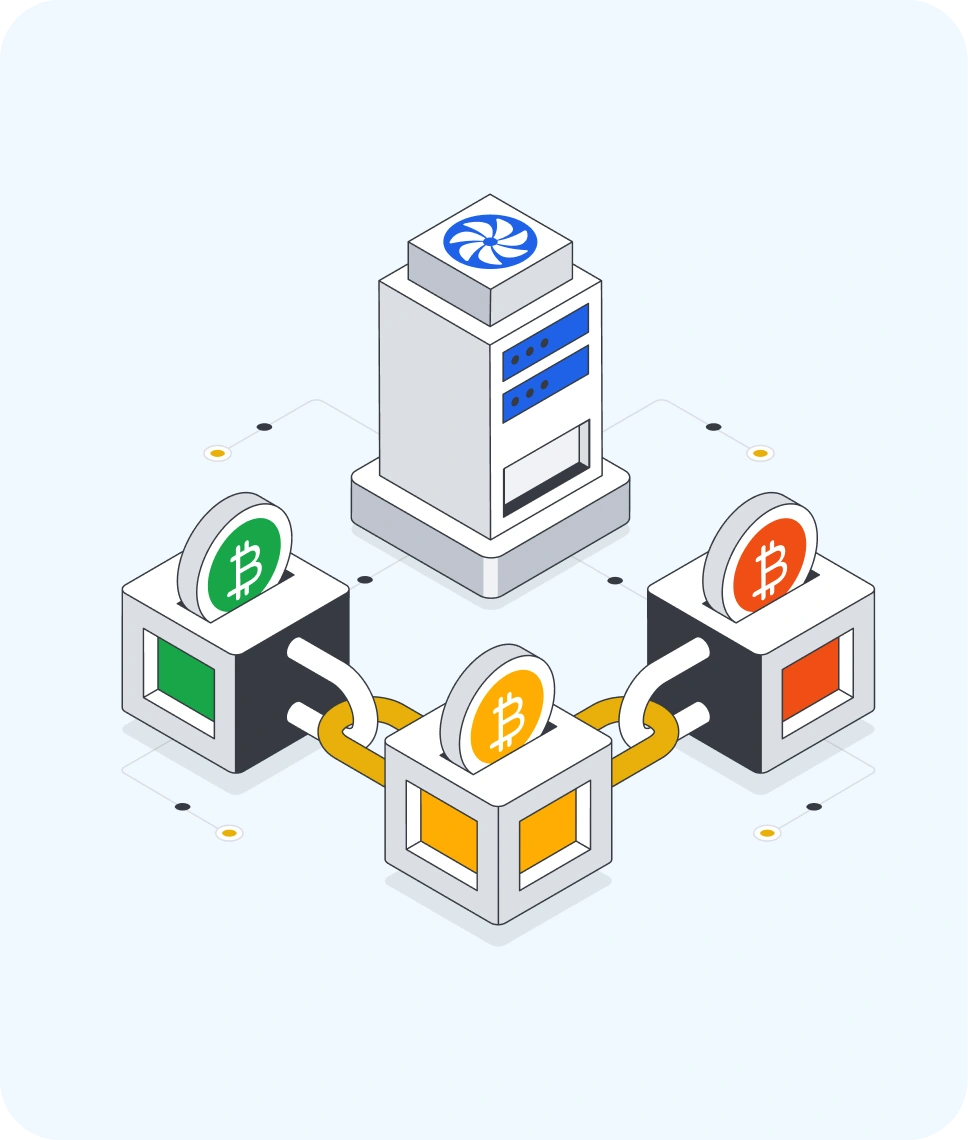When it comes to real estate web and app development, Zillow API needs no introduction. This efficient API has revolutionized the real estate landscape, providing developers with easy access to large amounts of property listings, data, and market insights. During the times when Zillow API hasn’t yet been born, developers faced immense challenges in accessing real estate data. Major property information was scattered across multiple platforms. Due to this, developers had to make manual efforts or undergo costly partnerships with real estate firms for data collection.
Thus, with limited real-time data, developers could only build less sophisticated apps that provided users with basic property details. There was no scope for offering deep insights and analytics of real estate, as we see today. But, with the arrival of Zillow API, gathering data for real estate is now simple for developers. Apps can directly integrate neighborhood trends with Zillow API property details, historical sales data, and price estimates (zestimates). This integration is quite smooth and helps users to experience the system much better.
However, the use of API comes with a price tag that can affect a project’s overall budget. Understanding Zillow API cost upfront is essential for developers to plan their real estate web and app development budget. This blog discusses in detail the different pricing models, factors that affect Zillow API cost, and some tips to optimize API use without overspending.
- Zillow API – Hype Or Reality
- Benefits Of Zillow API
- Zillow Pricing Model
- How Much Zillow API Costs in 2025?
- Zillow API Cost Breakdown – Factors Affecting The Cost
- Tips For Managing Zillow API Cost
- Conclusion
Zillow API – Is It Worth The Hype?
Today, there are nearly 300 million active users using Zillow. Also, the real estate platform has over 160 million housing listings. With such a huge database, Zillow has become the goldmine for real estate developers.
Did You Know?
- Zillow provided nearly 16.9% M leads to realtors in just one year (Source: iProperty Management).
- The National Median error rate for Zestimates on Zillow home listings is around 3.2%. (Source: WallStreetZen).
- In 2023, Zillow generated over $1.945 billion revenue. (Source: iProperty Management).
The Zillow API helps collect such a vast amount of data from different sources and share it to users. Developers can access this wealth of useful data to create robust and powerful apps with enhanced features-set. Such tools help users to make informed decisions about buying, selling, and renting properties.
Some of its major features are:
- Property details
- Foreclosure listings,
- Price estimates,
- Rental prices,
- Historical sales data,
- Tax assessments,
- Market trends,
And more.
Why is Zillow API Trustful?
You can rely on Zillow API as it provides real-time access to accurate and updated information. This helps them stay ahead in the fast-moving market. Also, developers no longer need to pull data manually from various sources. Instead, the API centralizes everything in one place. This allows developers to focus on building unique features for their real estate and related applications.
Watch this video to explore the Zillow API pricing, from free access to premium plans. Learn about its key benefits and cost factors to choose the best option for your needs!
Further, there are many benefits of using Zillow API for developers and businesses in the real estate sector. Here are some key advantages:
Extensive And Streamlined Data Access
Zillow API makes it extremely easy to extract property listings and market data from various sources. Developers can retrieve information on millions of properties, including details on home values, neighborhood statistics, and rental prices. They do not have to face any manual hardships in extracting such an intrinsic and huge amount of data.
Hence, Zillow API ensures that users have access to all types of updated insights in real time.
Improved User Experience
Zillow API allows developers to add significant features, such as search filters, and interactive maps. Also, by integrating accurate and the latest property information, data-driven real estate apps can offer users valuable information.
These features and capabilities make the app more engaging and allow users to find out properties as per their preferences. This significantly increases user engagement and satisfaction.
Time And Cost Efficiency
Using Zillow API helps developers manage time and cost efficiently. It will help you to control development costs and utilize resources for other app features. Moreover, you can build apps faster by leveraging its pre-built solutions. It fastens the development process.
Competitive Advantage
Since Zillow APIs enable access into real-time data and market statistics, real estate businesses access the information to stay ahead in the industry. For businesses, it can attract a lot more users with data that is wide-ranging. Furthermore, reliable data is useful to each of these businesses. An app consistently providing valuable perceptions is more likely to gain their trust along with preference.
Further, having access to unique data points allows developers to create innovative features that competitors may lack. This helps businesses attract more users and establish a stronger market presence.
This ease of access, efficiency, cost-savings, and Zillow reputation makes the API a go-to resource for developers and realtors. They rely on it for providing reliable real estate solutions that offer enhanced performance and functionality.
Zillow API Pricing Models
Zillow primarily offers both paid and free pricing models:
Free Access
Zillow offers limited free access to its API to developers, allowing them to get basic property data without any cost. This plan is most suitable for small scale applications or developers testing the API.
The free plan typically allows developers to access essential data such as property details, estimates, and basic location information. Hence, it is ideal for developers who need limited information for lightweight apps.
Moreover, free access may not offer technical support. This means, developers might have to rely on documentation or community forums for troubleshooting.
Paid Subscription
Zillow offers a variety of paid pricing models that give access to advanced features and capabilities. Paid plans provide access to a more extensive dataset. These may include historical data, detailed property information and market insights. This level of details is important for developers who need to analyze the real estate market, perform competitive analysis, or build apps that offer in-depth property insights. Higher API request limits is another benefit of paid plans; developers can make a greater number of requests per day or month.
Also, read: How Much Does 3D Game Development Cost in 2025?
How Much Does Zillow API Cost In 2025?
If you’re planning to integrate Zillow API, here is a detailed estimate of the cost of Zillow API. We’ve explained everything in detail so that you can estimate the total cost of development before hiring any agency.
Detailed Cost Estimates for Integrating Zillow API
To provide a more accurate idea for Zillow API Cost integration, let’s break down API cost into specific categories and suggest some estimated values:
Direct API Access Fees
- Free Tier: $0 per month. Basic functionalities with limited requests.
- Premium Tier: $200-$500 per month. More extensive capabilities and higher request limits.
- Enterprise Tier: $1,000-$3,000+ per month. Custom solutions for large-scale applications.
Development Costs
- Freelance Developers: You may need to pay approximately $50 per hour. It will take around 48 to 80 hours to integrate Zillow API in a basic app.
- Development Agencies: You may need to pay about $100 per hour if you hire an agency. It is ideal for complex projects.
Maintenance and Updates
- Monthly Maintenance: Maintenance is necessary to keep your app running smoothly. You may need to pay a fee of $200-$500 per month for ongoing support.
- Major Updates: You need to update apps regularly to retain customers. It may cost you around $2,000-$10,000 per year based on the complexity.
The following table provides a suggested breakdown of potential Zillow API costs based on varying levels of access and usage:
| API Access Level | Description | Suggested Monthly Cost |
| Basic Access | Limited to 100 requests per day | Free |
| Standard Access | Up to 1,000 requests per day | $50 |
| Premium Access | Up to 10,000 requests per day | $500 |
| Enterprise Access | Unlimited requests with priority support | $2,000 |
Zillow API Cost Breakdown – Factors Affecting The Cost
The cost of Zillow API might vary depending on numerous factors. Some of these factors include the data type being requested such as property listings, historical data, or demographic data. Also, the frequency of requests may cause differences in cost since higher volumes bring different price tiers.
What level of access is needed is also important; premium features or enhanced data sets will command more fees. Knowing these factors can help users plan and make better budgeting decisions when integrating the Zillow API into their applications.
Here are the factors affecting the cost:
- Volume of Requests: The number of API calls requirements can significantly impact the Zillow API cost. If you need a higher number of requests, you will need to subscribe to an expensive plan to fulfill your increased usage.
- Frequency of Data Updates: If your app needs real-time data updates, it will incur higher costs compared to with less frequent updates. In short, the more the updates, the higher the cost.
- Data Type: Different types of data may have varying costs associated with them. For example, detailed property analytics or historical data could cost you higher than basic property information.
- Integration Complexity: The complexity of integrating the API into an existing system can also add to development costs. That is because a more complex integration requires more resources for setup and maintenance.
- Usage Patterns: Regular usage patterns, such as busy times when users search, can lead to more requests and potentially higher costs.
- Return on Investment (ROI): When calculating the cost of Zillow API for your project, consider the potential ROI. By using comprehensive data, you can improve brand visibility, decision-making, and increase revenue.
Tips For Managing Zillow API Cost
As a real estate business grows, the usage of insightful data is bound to increase. However, with increased usage comes an increased cost of Zillow API. To manage Zillow API cost, developers can take certain measures to optimize their budget. Here are a few practical tips to help reduce expenses and avoid unexpected fees:
Optimize API Usage
Managing how you use Zillow API can help you save money. One way is to cache data you often use, so your app doesn’t need to ask for the same information repeatedly. You can also batch requests, where possible. This means, instead of making multiple smaller requests, ask for more data in fewer calls.
Lastly, review the data actually needed and avoid making any unnecessary calls to further optimize your usage.
Avoid Overage Fees
Overage fees occur when you exceed your plan’s limit. To avoid these, monitor your API usage closely. You can do this either by using analytics tools to track your usage or setting up usage alerts. You can also limit API usage during non-peak hours or optimize user queries to make calls.
In addition, build limits into your app to prevent excessive API requests. This can be done by restricting user activity or adding a delay between repeated data pulls. By proactively monitoring, you can significantly reduce unnecessary cost of Zillow API.
Choose the Right Plan Based On Project Needs
Before you start integrating the Zillow API, you must look at the size of your project. How many users do you have? How often do you pull data from Zillow? If you’re just testing, we won’t recommend you to buy a paid plan right away. A free or basic plan should work fine. As your app grows, you can add more features. It is when your users increase. At that time, it makes sense to go for an advanced plan. These plans give you access to more data and let you send more requests. You can unlock extra tools to make your app run smoother and smarter. The key is to match your plan with the real needs of your users. In this way, you’re not paying for the features you’re not using. Therefore, you’re not stuck as your app grows.
Also, read: What is COTS (Commercial-Off-the-Shelf) Software?
Take Away
If you’re planning to build a real estate app, it is necessary to understand how much Zillow API costs. This API gives you access to data like prices, home details and market trends. Like any other service, it comes with a cost – and that cost can vary. Some features are free, however, for advanced use, you’ll need a paid tier. You can start with a free or entry-level plan. It will help you understand how API works without spending a lot. You must set alerts and check dashboards regularly to avoid surprises on your bill. It is recommended to fetch only the data you need. Do not pull every detail unless necessary. Remember, using Zillow API effectively will enhance your real estate application and let you drive success in the competitive market.
FAQs
1. Does Zillow have a free API?
Yes, Zillow provides a free API with basic features. You can use it for property searches, home valuations and listings. It is ideal for just testing or building a personal project. You can get access to more datasets through other approved channels.
2. What is the Zillow API limit?
The number of requests is dependent on the plans you’re using. You need to understand free or entry level plans come with strict daily or monthly limits. These plans are good to go for light testing and small apps. If you’re building something more complex – you can purchase a higher tier plan.
3. Can I buy Zillow data?
Yes, you buy but not through direct routes. You need to contact licensing partners like Bridge Interactive to get access to historical pricing and listing details. These options are designed more for professional use, like powering real estate platforms or brokerage tools.
4. How much do Zillow APIs cost?
There’s no one-size-fits-all price because Zillow’s API pricing depends on how you plan to use the data. Free access is limited and often comes with usage caps. Paid options — especially for commercial use — vary depending on your request volume, features, and integration needs. You’ll likely need to request a custom quote through Zillow or Bridge Interactive to get exact pricing. For large-scale access, expect to pay a monthly or annual fee, possibly starting from a few hundred dollars and going up based on your usage.

